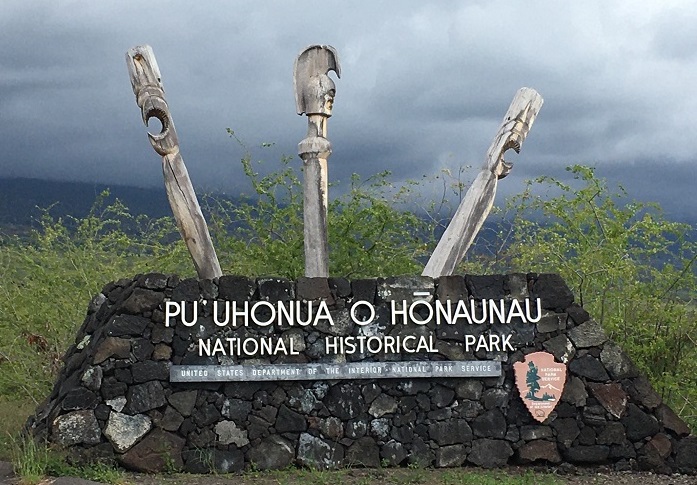
Join Thor and me as we learn about ancient Hawaiians at a fascinating reconstruction site.
NOTE: After way too many months without travel, Thor insisted on an R&R escape to Hawaii this April. He’d been keeping on eye on the very careful Covid-19 precautions in the islands, and the testing required before flying there. And now that we’re both fully vaccinated, we took the plunge – literally, for some snorkeling in the healing sea, as well as exploring the Big Island and Kauai. After this detour, I promise I’ll finish up my Virtual Italy Vacation series soon!
This was our first visit to the Big Island, and Thor and I continued to be impressed by the raw power of the “new” landscape, and a stronger sense of native history than we’d encountered on other islands. It really felt like we were visiting a foreign country, and it was wonderful to be able to travel again and explore the cultural roots. Polynesians arrived in the islands from 900-1100 AD, the first colonists, who brought plants, animals, and supplies, expanding the limited endemic species in this landscape of lava rock.
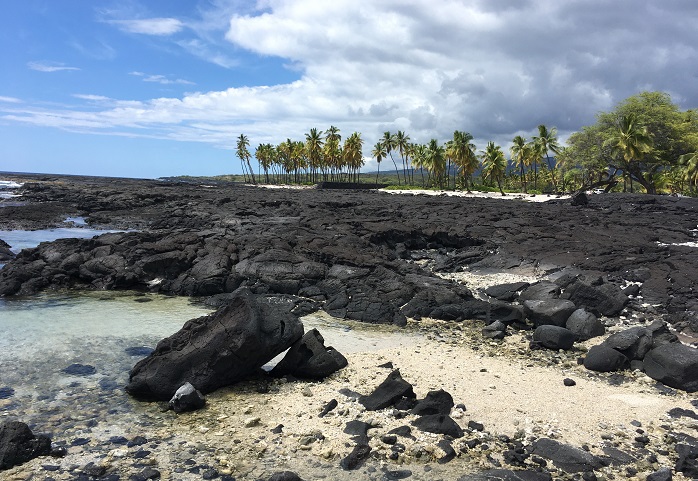
By 1100-1400, chiefs and aristocrats (the ali’i) had been established to rule over the commoners, and they initiated more voyages back and forth between Hawaii and Polynesia/Tahiti. New traditions were established, including human sacrifice. Strict rules of behavior, defining kapu (taboo) were laid out. If anyone violated the rules — such as a woman eating a banana, a commoner letting his/her shadow touch an ali’i, or a woman eating with a man — they were sentenced to death. The only reprieve was to outrun the pursuit and swim to one of many places of refuge (pu’uhonua). If the transgressor made it to the refuge, a priest would provide absolution and allow the person to return to normal life. The park has restored this ancient place of refuge, the site of a heiau (temple) on the cove shore:
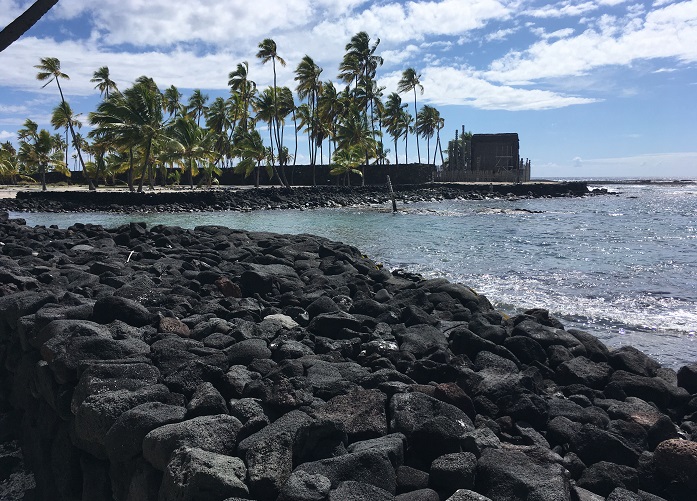
This particular temple of Honaunau had special mana, or spiritual power, because it housed the bones of 23 ali’i, including the great-grandfather of the great king Kamehameha. These two god-figures (ki’i) guard the canoe inlet (above photo) that was used only by arriving ali’i:
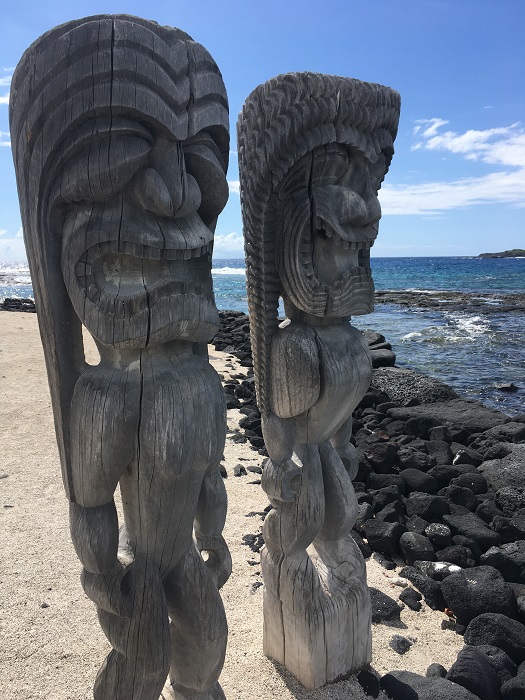
The reconstructed Heiau with more Ki’i images and a platform to leave offerings:

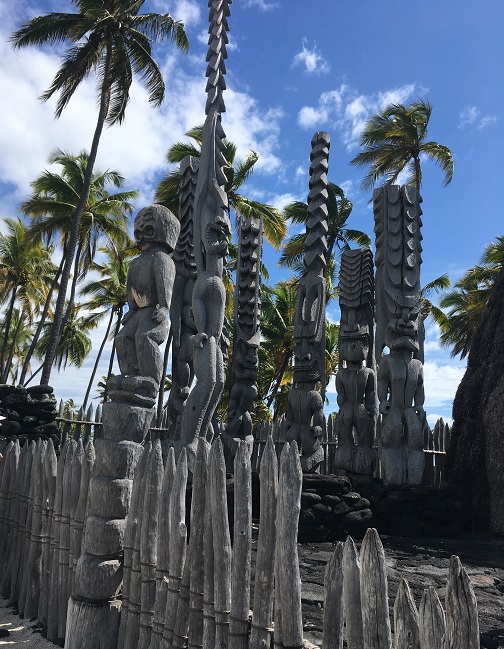
This figure, outside the heiau enclosure, felt to me like the desperate cry of the pursued transgressor calling out to the spirits for refuge. Or maybe celebrating forgiveness after the terrifying ordeal of flight:

Here’s a smaller model of the large heiau:
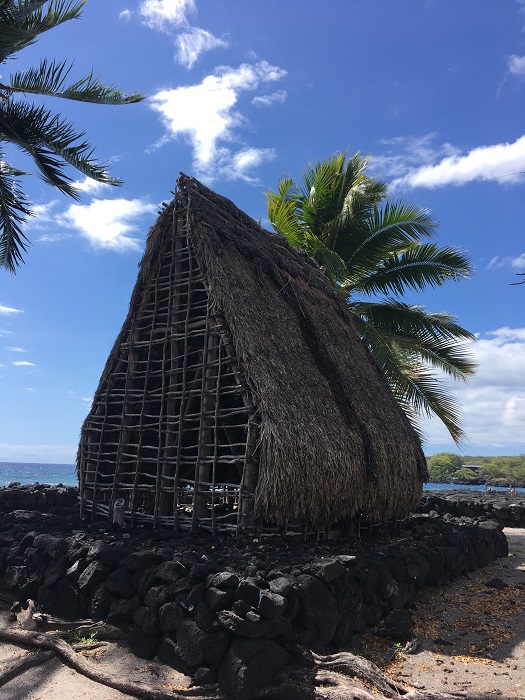
The site has two parts: the Royal Grounds where ali’i and their servants could meet for games and decision-making, and the sacred grounds of the Pu’uhonua refuge. The refuge grounds are enclosed by this wall of lava stones up to 12 feet tall, 18 feet wide, and over 950 feet long. It was built over 400 years ago, using stones fitted without lava, and still looks almost brand new.
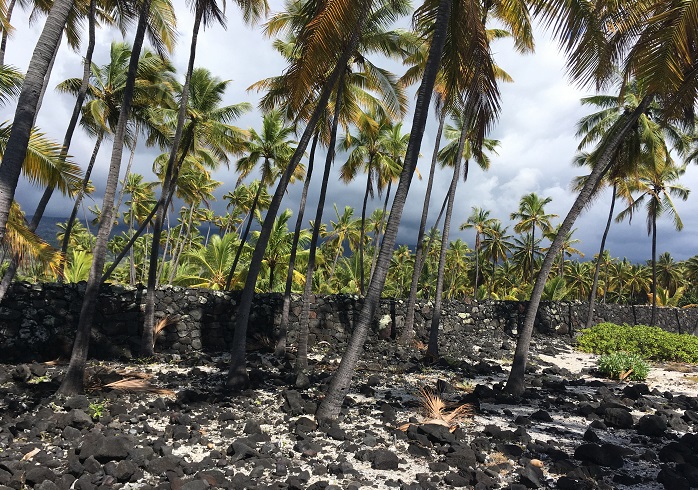
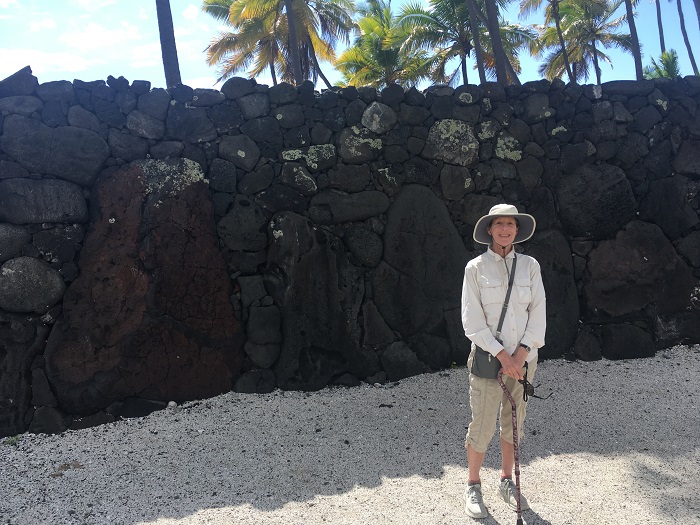
In the Royal Grounds, they had goat pens and fish ponds. Wild goats still roam the grounds.
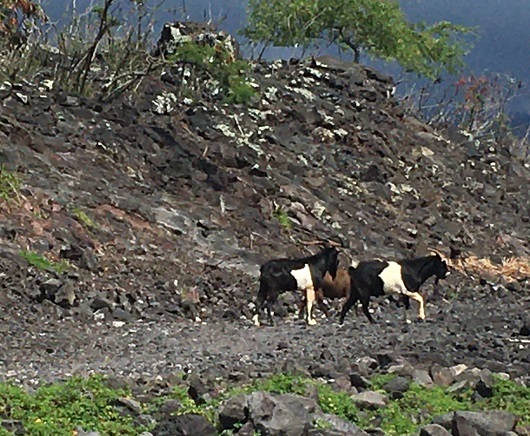
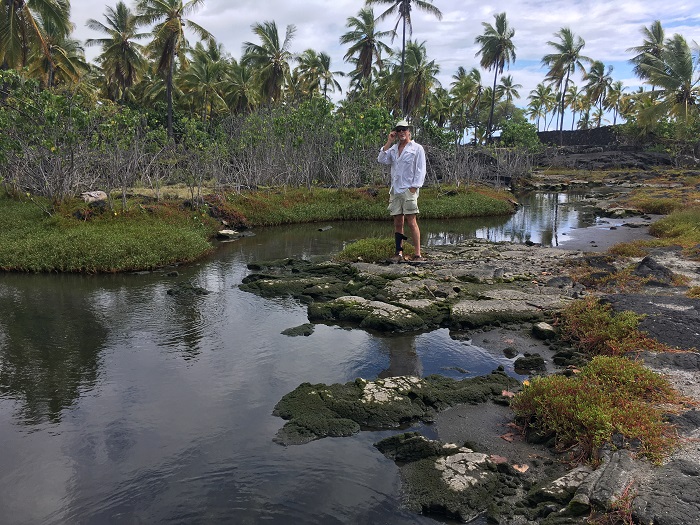
The ali’i enjoyed this game of Konane, using black and white pebbles. This rock “board” looked to me like the form of Honu, the sea turtles that frequent the adjoining cove.

Thatched shelters provided cover for meetings, storing canoes, or craft work.
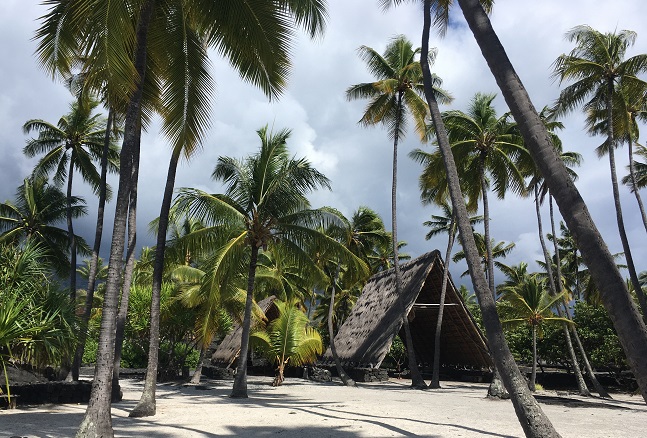
A traditional outrigger canoe:
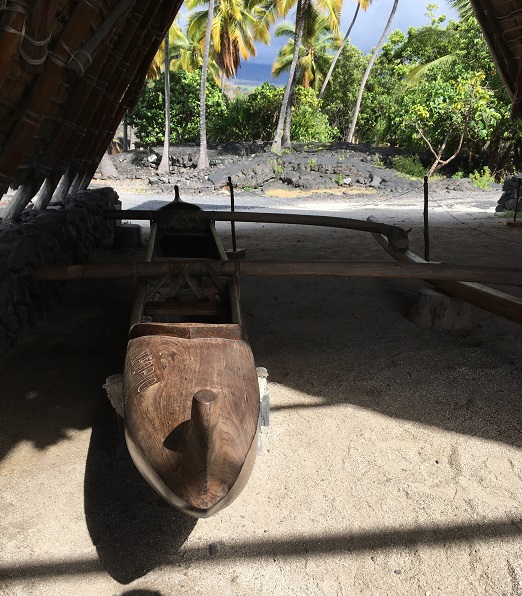
Next week, we’ll continue our visit with the creations of native artisans following the ancient designs of tools, drums, and statues:
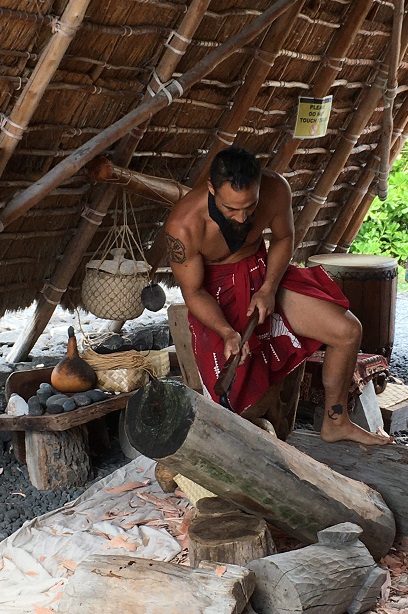
*****
You will find The Rambling Writer’s blog posts here every Saturday. Sara’s latest novel from Book View Cafe is available in print and ebook: The Ariadne Connection. It’s a near-future thriller set in the Greek islands. “Technology triggers a deadly new plague. Can a healer find the cure?” The novel has received the Chanticleer Global Thriller Grand Prize and the Cygnus Award for Speculative Fiction. Sara has recently returned from another research trip in Greece and is back at work on the sequel, The Ariadne Disconnect. Sign up for her quarterly email newsletter at www.sarastamey.com

1 thought on “The Rambling Writer Visits the Big Island, Hawaii, part 3: Place of Refuge”